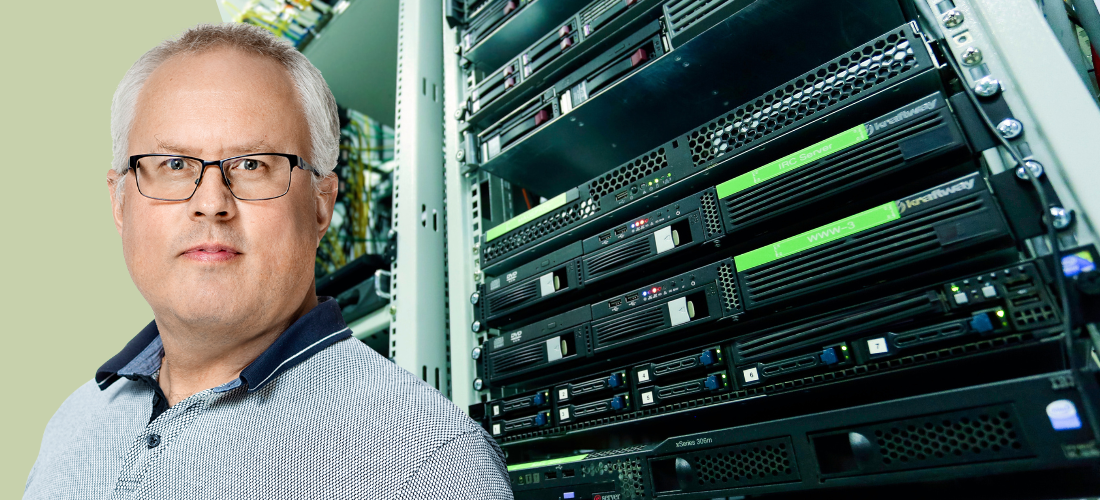
Hello, who are you and what do you do?
My name is Mikael Aronsson and I am the IT Manager at Axel Larsson. I am responsible for all IT systems and all IT-related equipment within the company, such as: computers, printers, telephones, infrastructure and more. I've been with the company since the 90s, so I've been with the company for a while.
Are there any ongoing sustainability projects in IT?
Yes, we are working on several initiatives that contribute to a more sustainable IT business. One of our most important projects is to reduce the use of paper through the digitalization of processes, especially in our ERP system. For example, we have replaced picking lists and other unnecessary printing with digital solutions. We also focus on energy efficiency, by using smarter and more energy-efficient equipment. We facilitate and optimize for flexible workplaces. The possibility of remote work reduces the need for large office spaces and at the same time reduces commuting. We reuse computers and other equipment as far as possible, and return old equipment to suppliers instead of throwing it away. We also have a green server solution, all operations have now been moved to an environmentally certified server hall. In summary, we strive to make IT operations more sustainable from several perspectives.
Can you tell us more about how we work with energy consumption in the IT department?
We have significantly reduced the number of printers and copiers and are now using energy-efficient machines. Computers, monitors and other peripherals are also chosen with energy consumption and ergonomics in mind. One new wide screens consume less power than two or three old small screens, etc.
How does IT contribute to more flexible workplaces?
We are investing in hybrid workplaces where employees can work from anywhere. In the warehouse, we use laptops, for example, which makes it possible for assembly staff to easily search for assembly instructions and other information. They are more energy-efficient and make it easy to report directly in the system, no matter where you are in the warehouse.
Can you tell us more about our reuse of IT equipment?
We use computers for at least four years. After that, they are reused internally where the performance requirements are lower. When they are eventually phased out, they go back to the supplier via a take-back system: Nothing is thrown away. Cables, toners and other IT equipment are also being recycled.
Tell us more about the server solution, what does the sustainability perspective look like there?
We have moved all operations to an environmentally certified data center, where we receive reports on energy use and environmental impact. This reduces our electricity consumption and the need for cooling compared to our own server operation.
Is it difficult to work sustainably in IT?
It's complex, we have to balance safety, performance and environmental impact. Standardization is a key word. We avoid overcapacity and invest in sustainable solutions that shut down automatically. Our principle is to size for average use, not for the peaks.
What is going forward in sustainability work?
We are looking at replacing computers in the warehouse and assembly with tablets or handheld terminals. It reduces costs, reduces printing and is even more mobile. We also review the handling of sales material, e.g. product sheets, manuals and other printed matter. Simplified management through digitalization saves both time within the company and creates a reduced environmental impact.
What do you think is most exciting about sustainability work?
Technological development and the vision of a flexible working life drive us forward. The pandemic showed that we can quickly adapt, today we have more flexible home offices around the country, which brings us closer to the customer. Going forward, we want to standardize even more and use our premises and equipment more efficiently. It should be easy to work from anywhere, without paper or special solutions.